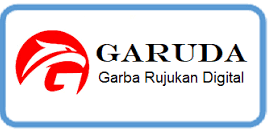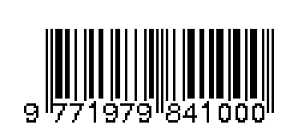PERBANDINGAN EFEKTIVITAS PENYERAPAN Pb DAN CO DI UDARA PADA TANAMAN ANGSANA (PTEROCARPUS INDICUS)DAN GLODOGAN TIANG (POLYALTHIA LONGIFERA) SEBAGAI UPAYA BIOFILTER UDARA
DOI:
https://doi.org/10.34151/technoscientia.v10i2.102Keywords:
Air pollution, Angsana, Glodogan Tiang, Pb and COAbstract
Affandi Street is one of the main Street that uses plant in every road (green line) in an effort to reduce air pollution. Angsana and Glodogan Tiang plants have a role in reducing air pollution. The purpose of this study was (1) to compare the effectiveness of Lead absorption and Carbon Monoxide in the air between Angsana plant and Glodogan Tiang, (2) knowing the point of the highest contamination of the plants and (3) to know the leaf position which has the most effective absorption.The research was conducted on October 2017-February 2018. The method used was the lower and upper leaf sampling on Angsana and Glodogan Tiang at 3 points along Affandi Street that is, the point 1 intersection of Condong Catur, the 2nd point in front of Mirota Gejayan , and point 3 on Demangan market. Repeat sampling three times in one month, then the sample was tested using Atomic Absorbtion Spectrophotometer (AAS) and Spektrofotometer UV-Vis method at Balai Besar Teknik Kesehatan Yogyakarta, and data analysis using ANAVA and MANAVA method with SPSS application. The results showed that plants greatly affect the absorption of air pollutants in the Affandi Street, from the results it is known that the Glodogan Tiang plant is a better plant in absorbing Pb and CO with average absorbing 3.51189 mg/kg, while the average Angsana absorbs 3,38519 mg/kg. The highest point of pollution location is at location point 3, Demangan market. The more effective leaves position in absorbing Pb is the lower leaf plant and the more effective leaf position absorbs the CO that is the upper leaves of the plant.
References
Dianawati, U., 2001, Peranan Vegetasi di Sekitar Kampus UGM Dalam Menyerap Emisi Timbal (Pb) Dari Asap Kendaraan Bermotor, Thesis, Universitas Gadjah Mada, Yogyakarta.
Nazir, M., 2005,Metode Penelitian,Ghalia Indonesia.
Rachmawati, D. D., 2005, Peranan Hutan Kota dalam Menyerap dan Menyerap Timbal (Pb) di Udara Ambien (Studi Kasus di Jalan Tol Jagorawi Bogor),Skripsi, Institut Pertanian Bogor, Indonesia.
Santi, N, D. 2002, 18 Juli 2017, Pencemaran Udara Oleh Timbal (Pb) serta Penanggulangannya, Universitas Sumatra Utara, http://repository.usu.ac.id/handle/123456789/3542.
Soedomo, M., 2001,Kumpulan Karya Ilmiah Pencemaran Udara, Penerbit ITB, Bandung.
Sunu, P., 2001, Melindungi Lingkungan dengan Menerapkan ISO 14001, Grasindo, Jakarta.
Suyono, A. H., 2001, Awas! Setan Gentayangan di Udara, Majalah Intisari, Edisi Juli 2001, PT. Intisari Mediatama, Jakarta.
Tjitrosoepomo, G., 2003, Morfologi Tumbuhan, Gadjah Mada University Press, Yogyakarta.
Wardhana, W. A., 2001, Dampak Pencemaran Lingkungan, Andi Offset, Yogyakarta.







